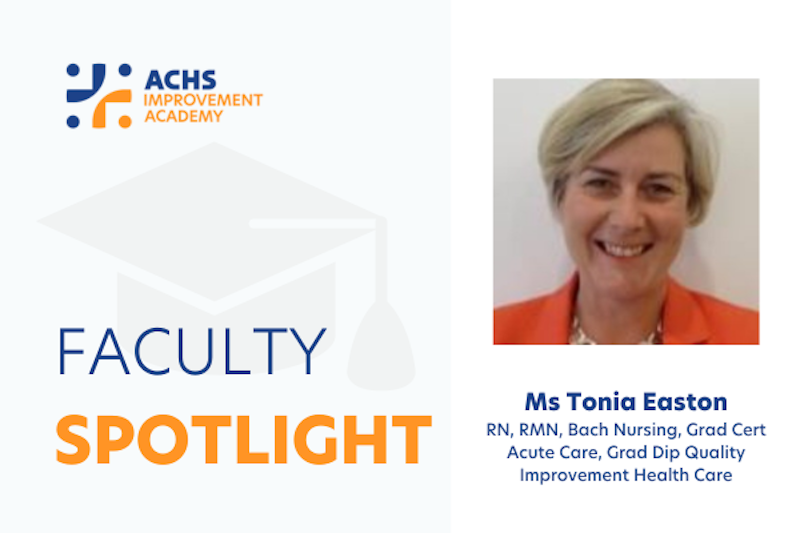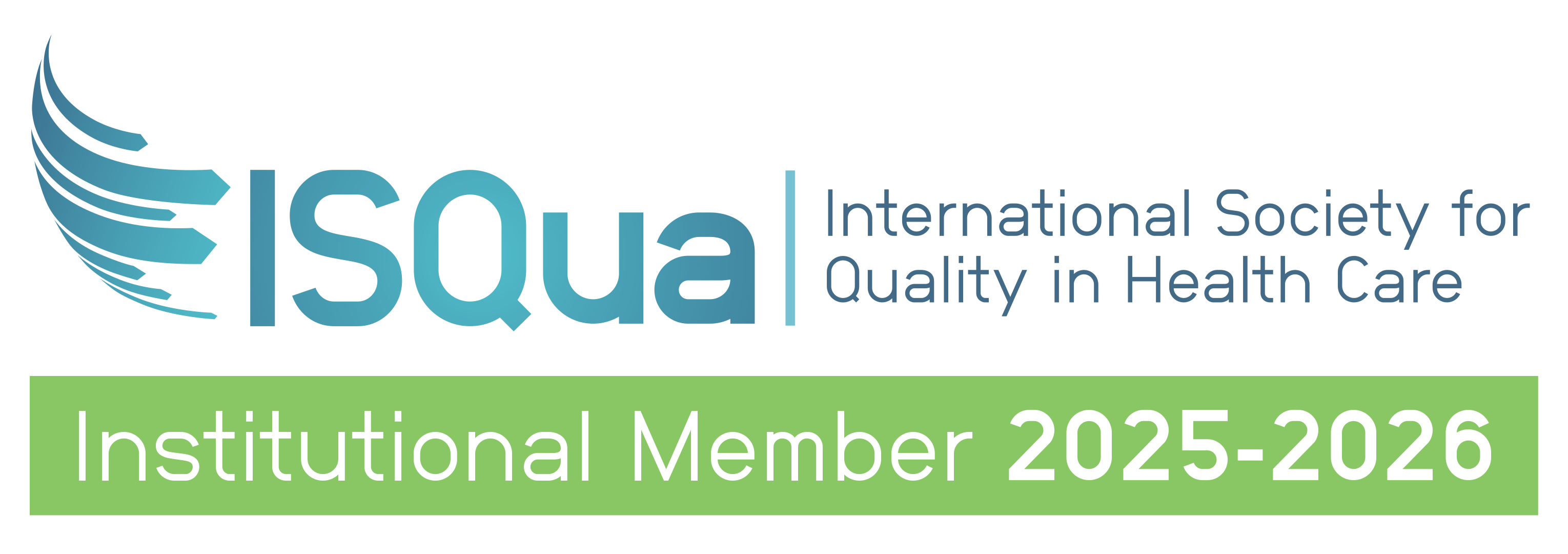
Insights from an ACHS Lead Assessor: Short Notice Assessments and the Evolution of Healthcare Quality and Safety
Welcome to the ACHS Improvement Academy Faculty Spotlight series, where we highlight the expertise and perspectives of esteemed colleagues on key topics in healthcare.
In this edition, we are excited to feature Ms Tonia Easton, one of our facilitators for Short Notice Assessment Training at the ACHS Improvement Academy (IA). With extensive experience as an ACHS Lead Assessor and a background in senior management roles across rural and tertiary hospitals, Ms Easton’s expertise spans across a broad range of specialties, including general nursing, intensive care, midwifery, and clinical governance.
1. Can you share what led you to pursue a career in healthcare, particularly in quality, risk management and clinical governance?
For many years, I was working as a senior clinician in Intensive Care, where the effectiveness of patient care heavily depends on well-structured systems and processes. The clinical outcomes were focused on the patient or a particular patient group, and the ward or clinical unit.
I was backfilling a Quality Manager role and found it very rewarding and the professional learnings enormous. It changed my mindset and I realised that I just might be able to make a larger impact to more patients, staff and services. As a result, I went on to undertake professional studies in quality management in healthcare so I could have a solid foundation of quality improvement to which I could apply to practice. The rest is really history.
2. With over a decade of experience as a Lead Assessor, how have you seen the landscape of healthcare safety and quality evolve?
I have seen some significant changes with the outcomes in clinical care and healthcare safety since the introduction of the NSQHS standards under the Australian Commission on Safety and Quality in Health Care (ACSQHC). Specifically, within areas of infection prevention and control and medication safety.
There is certainly more of an emphasis on implementing systems that support the appropriateness and effectiveness of care and how we measure it. Knowing why we are doing what we are doing and ensuring it is founded on best practice and having the evidence to support it is critical.
Partnering with the patient has certainly become much more central to all our discussions, and ensuring we have systems in place to partner with them. These partnerships relate to the planning, design, delivery, measurement and evaluation of care.
3. How do you believe the introduction of Short Notice Assessments (SNA) will influence the future of healthcare safety and quality?
The SNA process will assist in supporting continuous improvement and reduce the administrative burden of preparing for an accreditation assessment.
When onsite we get to see things as it really is – business as usual. My hope is that as SNAs become more integrated into routine practice, the build up towards accreditation will decrease as it will be viewed as part of the regular course of business.
The accreditation assessment should be seen as a journey of improvement. We are all on the same journey of wanting to make it better for the patient, of making it a better one with good quality outcomes.
4. From your experience, what are the key factors that healthcare teams must focus on to ensure consistent high standards?
None of this will be achievable without a valued, respected committed workforce. The workforce needs to have a shared vision of wanting to achieve this – with this part of the services Vision and Misson Statement.
A sound and robust Clinical Governance Framework needs to be in place that clearly articulates accountabilities and responsibilities, i.e. what is to be achieved (priorities), how they are to be delivered (strategies), the success factors (robust performance metrics) and how you are going to monitor them and when.
Invest in staff training and development to ensure a skilled workforce capable of delivering care in the appropriate environment.
5. Can you tell us about your involvement with the review of medication safety practices in a correctional services facility? What were the key takeaways from this experience?
The processes in place to support medication management in correctional services facilities are vastly different to what you see within a hospital setting. My brief was to identify any issues with the implementation of new processes to the Medication Management system and suggest improvements to support it.
The biggest take home messages from this experience or any such experience like this are the following:
-
Have a clear outline of what your project is and its deliverables – to avoid project creep
-
Establish clear lines of accountability and communication for reporting of project outcomes and escalation of issues should they arise
-
The need to undertake good process mapping to gain a clear understanding of the medication management system
-
Engagement with persons involved with the process to gain an understanding from their perspective
-
Interrogation of data and review of all evidence available that supports the process
-
Make use of all tools available to you to assist in gaining a full understanding of the process
6. What are the key benefits of the ACHS Improvement Academy ‘Understanding Short Notice Assessment’ training that you currently facilitate?
The ACHS Improvement Academy’s ‘Understanding Short Notice Assessment’ training has some distinct advantages. It’s been put together by industry experts, including current Lead Assessors, which means the content is grounded in real-world experience. The training is designed to be practical, focusing on a business-as-usual approach that attendees can relate to. Participants are also actively involved throughout the sessions, and by the end, they leave with concrete plans they can apply directly to their own work.
Thank you, Tonia, for sharing your insights and experience with us. You can learn more or register for our ‘Understanding Short Notice Assessment’ training here.

